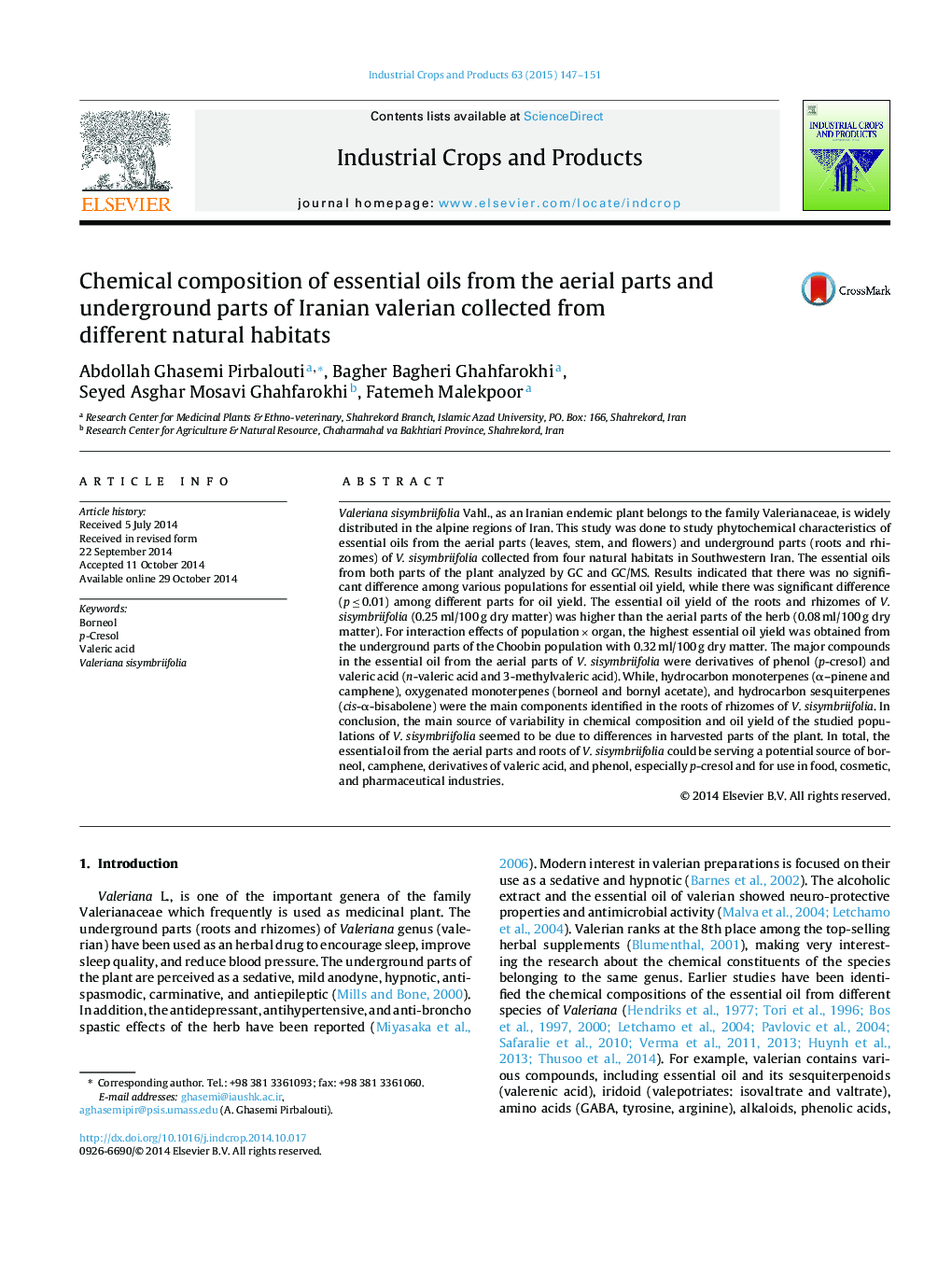| کد مقاله | کد نشریه | سال انتشار | مقاله انگلیسی | نسخه تمام متن |
|---|---|---|---|---|
| 4513253 | 1624846 | 2015 | 5 صفحه PDF | دانلود رایگان |
• We identify the chemical composition of the essential oils from the aerial parts and underground parts of Valeriana sisymbriifolia.
• The essential oil from the aerial parts (leaves, stem, and flowers) of V. sisymbriifolia is a potential source of derivatives of phenol (p-cresol).
• The essential oil from V. sisymbriifolia roots and rhizomes is a potential source of hydrocarbon and oxygenated monoterpenes.
Valeriana sisymbriifolia Vahl., as an Iranian endemic plant belongs to the family Valerianaceae, is widely distributed in the alpine regions of Iran. This study was done to study phytochemical characteristics of essential oils from the aerial parts (leaves, stem, and flowers) and underground parts (roots and rhizomes) of V. sisymbriifolia collected from four natural habitats in Southwestern Iran. The essential oils from both parts of the plant analyzed by GC and GC/MS. Results indicated that there was no significant difference among various populations for essential oil yield, while there was significant difference (p ≤ 0.01) among different parts for oil yield. The essential oil yield of the roots and rhizomes of V. sisymbriifolia (0.25 ml/100 g dry matter) was higher than the aerial parts of the herb (0.08 ml/100 g dry matter). For interaction effects of population × organ, the highest essential oil yield was obtained from the underground parts of the Choobin population with 0.32 ml/100 g dry matter. The major compounds in the essential oil from the aerial parts of V. sisymbriifolia were derivatives of phenol (p-cresol) and valeric acid (n-valeric acid and 3-methylvaleric acid). While, hydrocarbon monoterpenes (α–pinene and camphene), oxygenated monoterpenes (borneol and bornyl acetate), and hydrocarbon sesquiterpenes (cis-α-bisabolene) were the main components identified in the roots of rhizomes of V. sisymbriifolia. In conclusion, the main source of variability in chemical composition and oil yield of the studied populations of V. sisymbriifolia seemed to be due to differences in harvested parts of the plant. In total, the essential oil from the aerial parts and roots of V. sisymbriifolia could be serving a potential source of borneol, camphene, derivatives of valeric acid, and phenol, especially p-cresol and for use in food, cosmetic, and pharmaceutical industries.
The underground (up) and aerial parts (below) and structure of the main components (Borneol in up and p-cresol in below) in the essential oil from of Valeriana sisymbriifolia Vahl.Figure optionsDownload as PowerPoint slide
Journal: Industrial Crops and Products - Volume 63, January 2015, Pages 147–151
